If cross- sectional area of limb I is and that of limb II is then velocity of the liquid in the tube will be, (cross- sectional area of tube is very small)
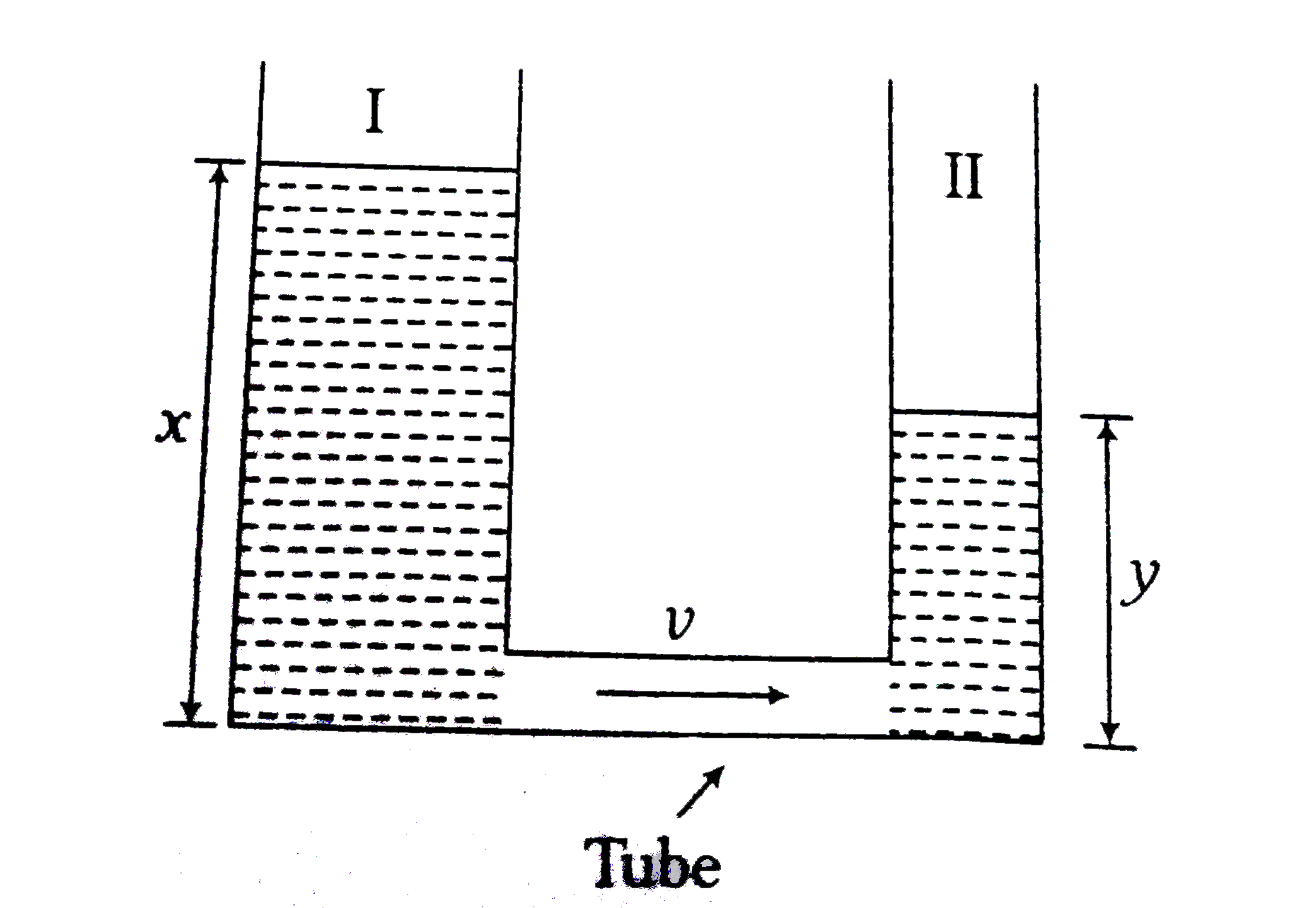
None of these
The correct Answer is:A
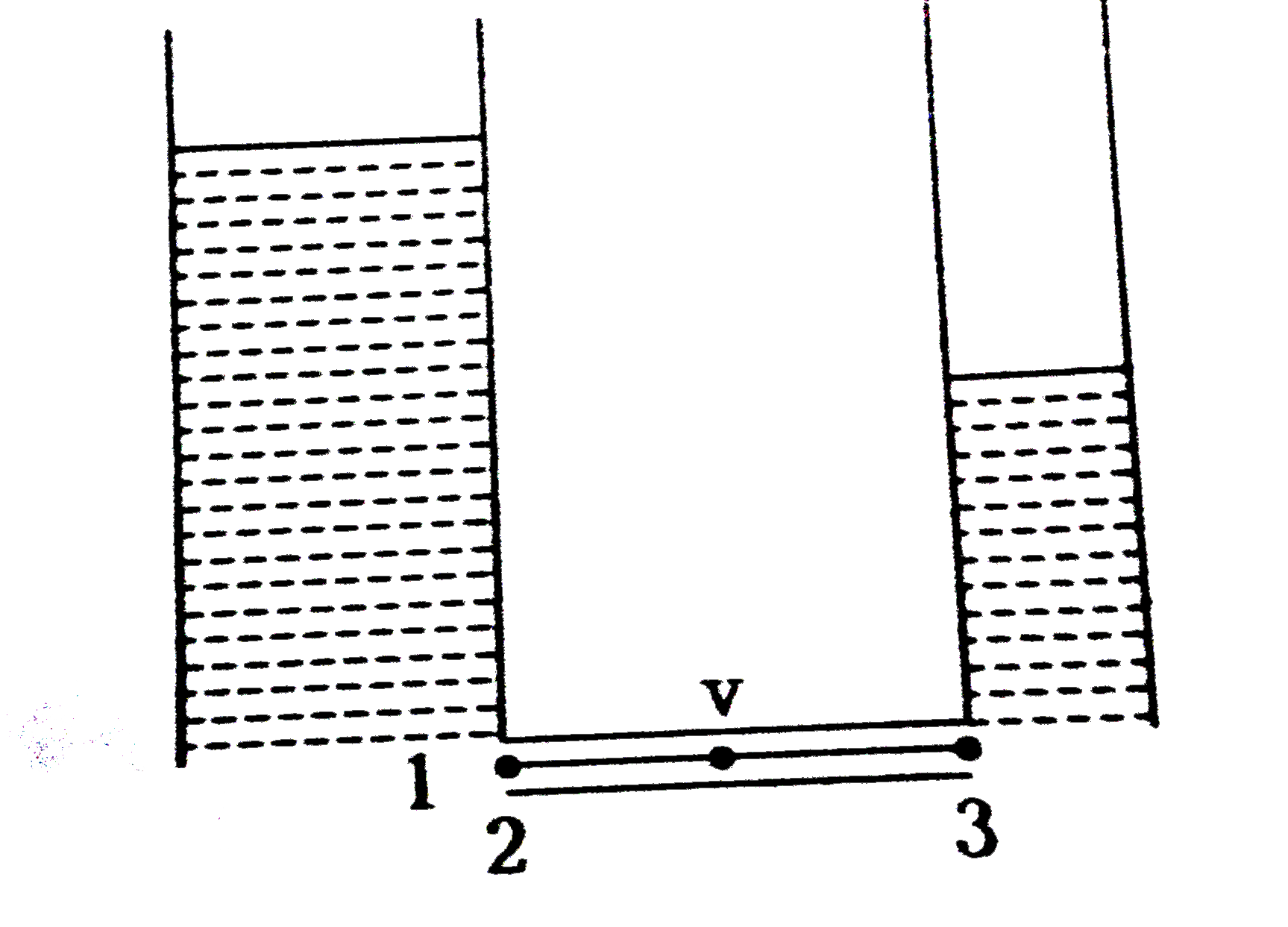
Between 1 and 2
Difference in pressure energy = difference in kinetic energy
or
Topper's Solved these Questions
- FLUID MECHANICSBook:DC PANDEYChapter:FLUID MECHANICSExercise:B) Medical entrance special format question
Explore 19 Videos
- FLUID MECHANICSBook:DC PANDEYChapter:FLUID MECHANICSExercise:Match the columns
Explore 6 Videos
- FLUID MECHANICSBook:DC PANDEYChapter:FLUID MECHANICSExercise:Check point 13.4
Explore 10 Videos
- EXPERIMENTSBook:DC PANDEYChapter:EXPERIMENTSExercise:Subjective
Explore 15 Videos
- GENERAL PHYSICSBook:DC PANDEYChapter:GENERAL PHYSICSExercise:INTEGER_TYPE
Explore 2 Videos
Similar Questions
_E01_217_Q01.png)
In a movable container shown in figure a liquid of density ρ is filled up to a height h the upper & lower the cross sectional areas are A2&A1 respectively (A2>>A1) if the liquid leaves out the container through the tube of cross-sectional area A1 then find.
(i). Velocity of liquid coming out.
(ii). Backward acceleration of the container.
View SolutionAn organic liquid rises 2.0 cm in a capillary tube. How much will it rise if the cross-sectional area of the tube is doubled?
View Solution
Knowledge Check
The breaking stress on a unit cross sectional area is
Atensile strengthByielding pointCelastic fatigueDnone of theseIn the figure, the cross-sectional area of the smaller tube is a and that of the larger tube is 2a. A block of mass m is kept in the smaller tube having the base area that of the tube. The difference between water levels of the two tubes is
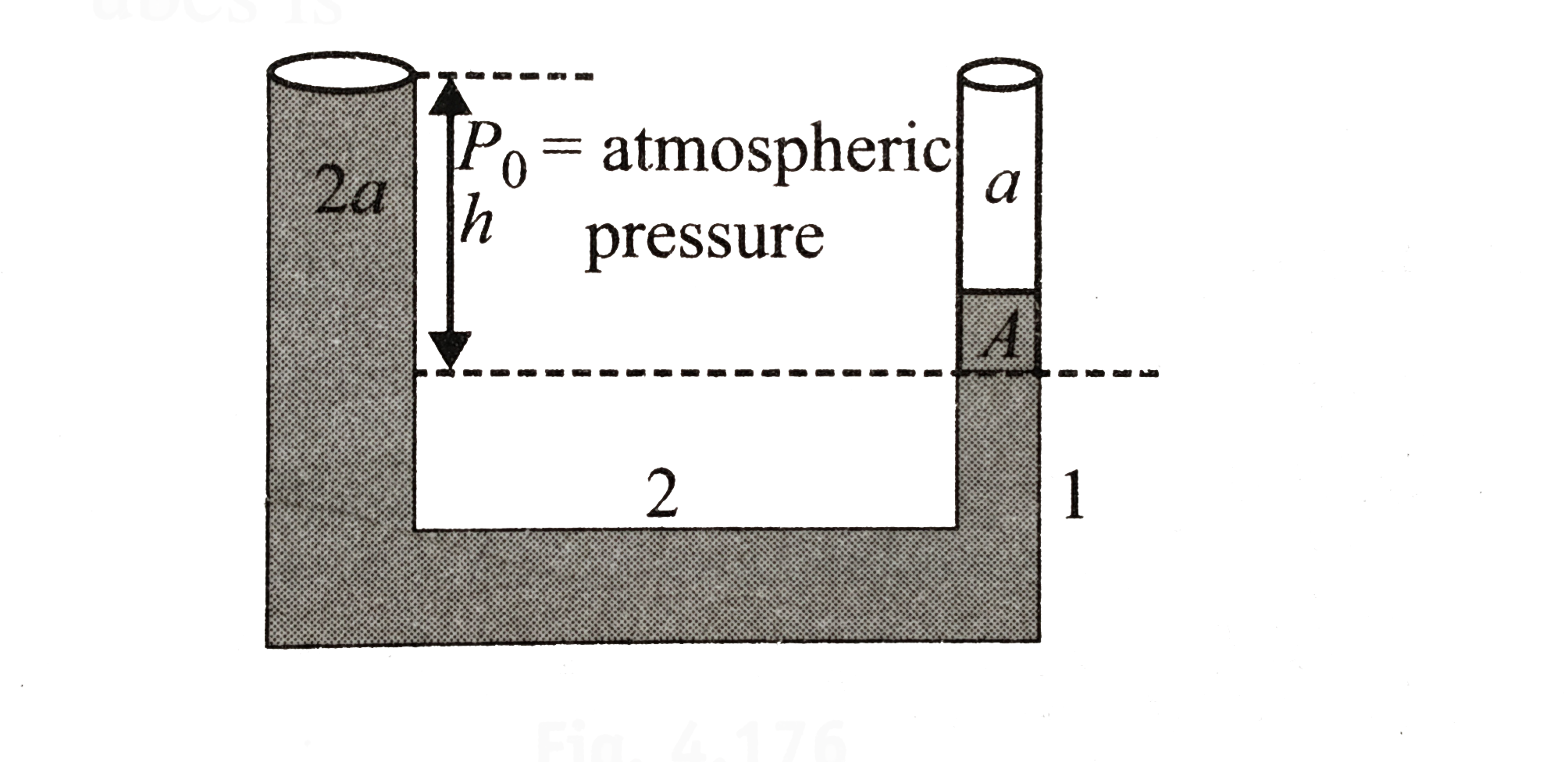 AP0ρg+maρBP0ρg+m2aρCmaρDm2ρa
AP0ρg+maρBP0ρg+m2aρCmaρDm2ρaAn ideal liquid of density ρ is pushed with velocity v through the central limb of the tube shown in fig. What force does the liquid exert on the tube? The cross sectional areas of the three limbs are equal to A each. Assume stream-line flow.
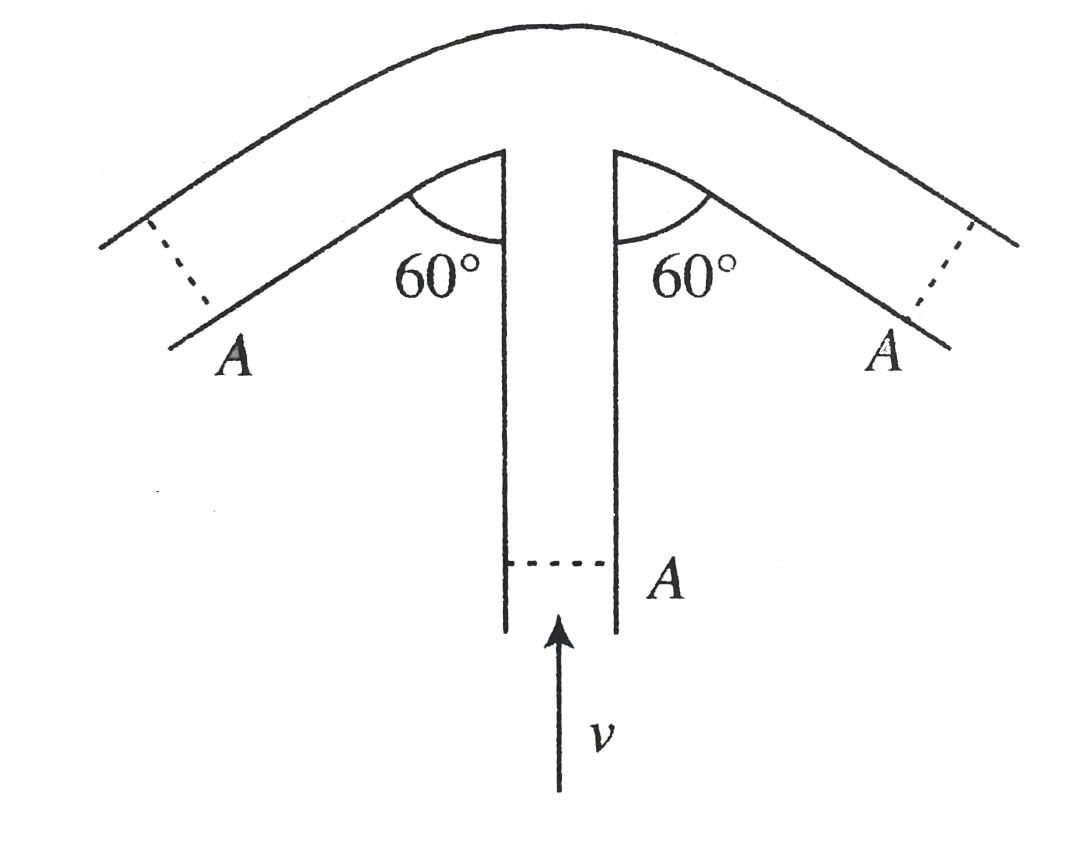 A98ρAv2B54ρAv2C32ρAv2DρAv2
A98ρAv2B54ρAv2C32ρAv2DρAv2
A container has a small hole at its bottom. Area of cross-section of the hole is A1 and that of the container is A2. Liquid is poured in the container at a constant rate Qm3s−1. The maximum level of liquid in the container will be
View SolutionFrom a horizontal tube with area of cross-section A1 and A2 as shosn in fiugre liquid is flowing in the level of the liauid in the two veritcal tunes is h.
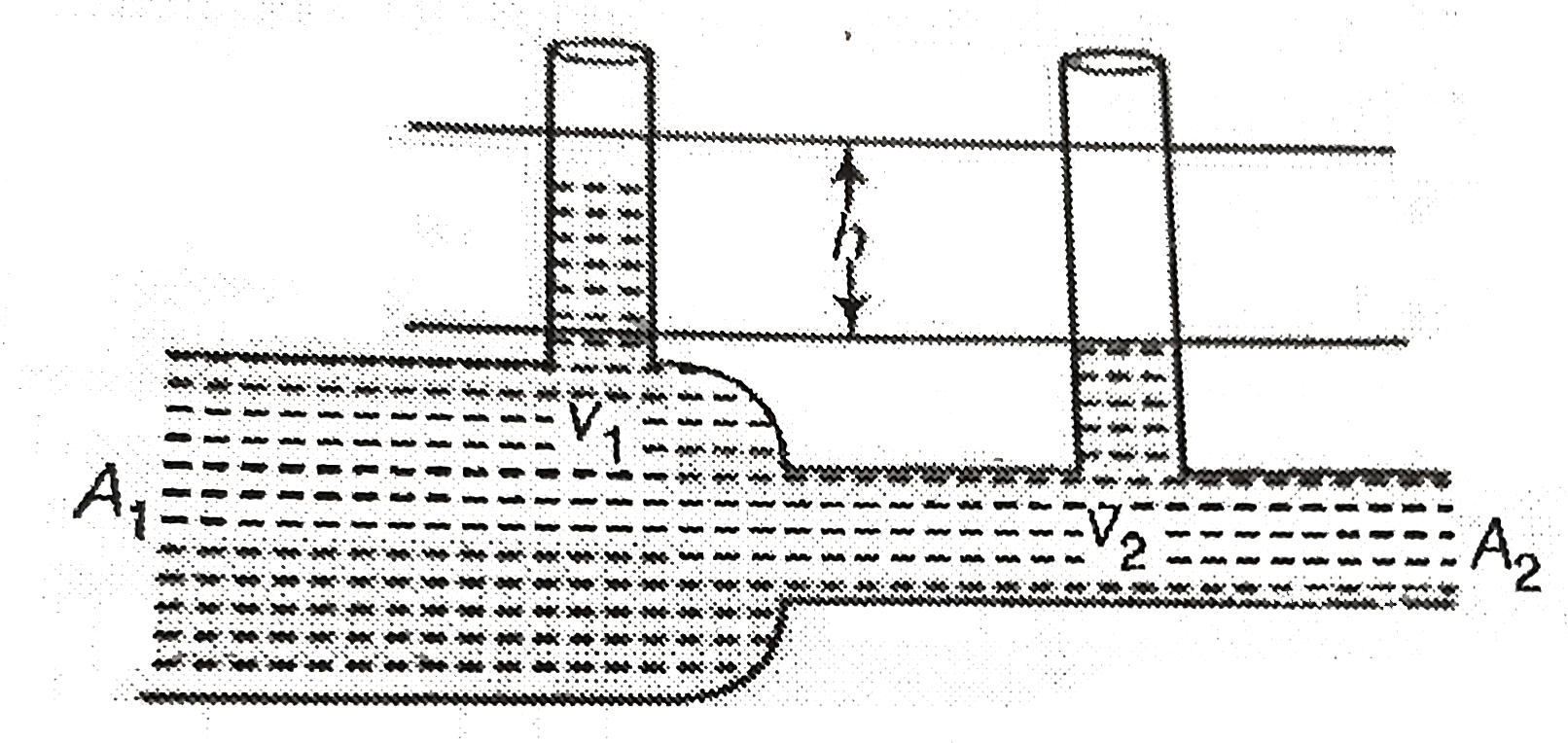
View SolutionA liquid flows through a horizontal tube. The velocities of the liquid in the two sections, which have areas of cross section A1 and A2 are v1 and v2 respectively. The difference in the levels of the liquid in the two vertical tubes is h. Then
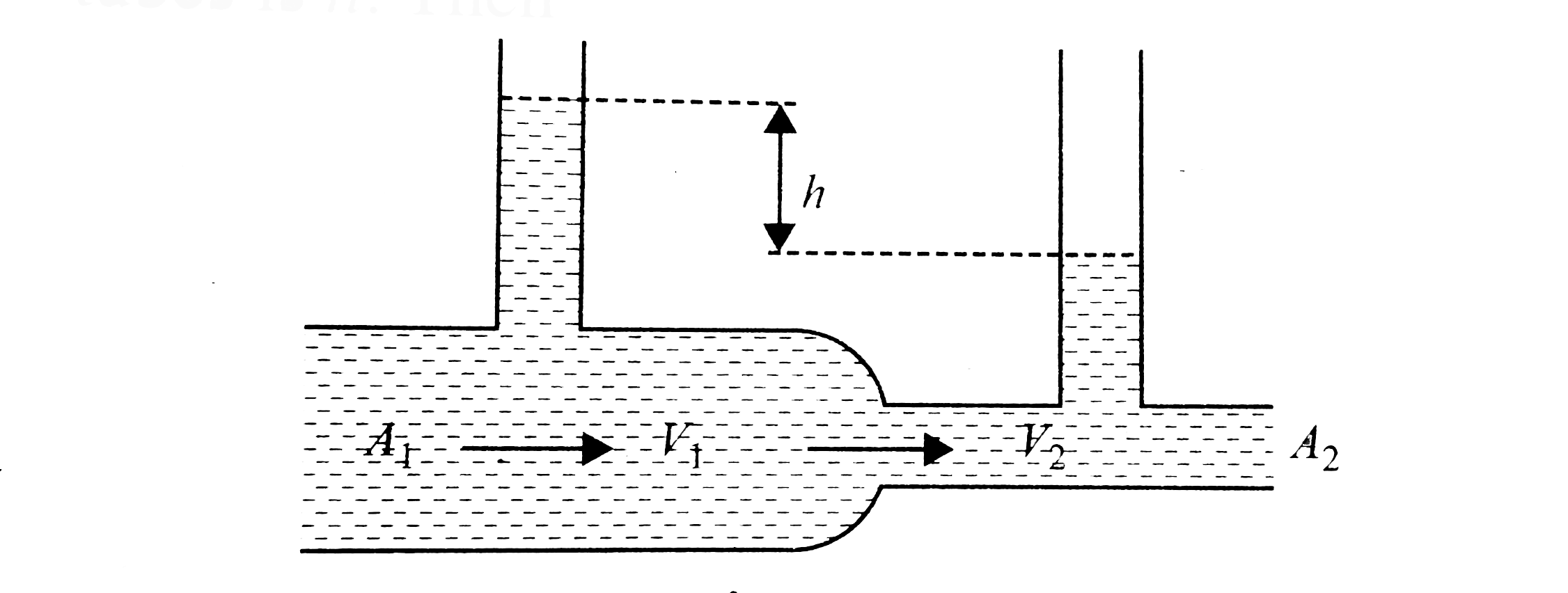
View SolutionFigure shows a liquid flowing through a tube at the rate of 0.1m3/s. The tube is branched into two semicircular tubes of cross-sectional area A/3 and 2A/3. The velocity of liquid at Q is (the cross section of the main tube is A=10−2m2 and vp=20m/s)
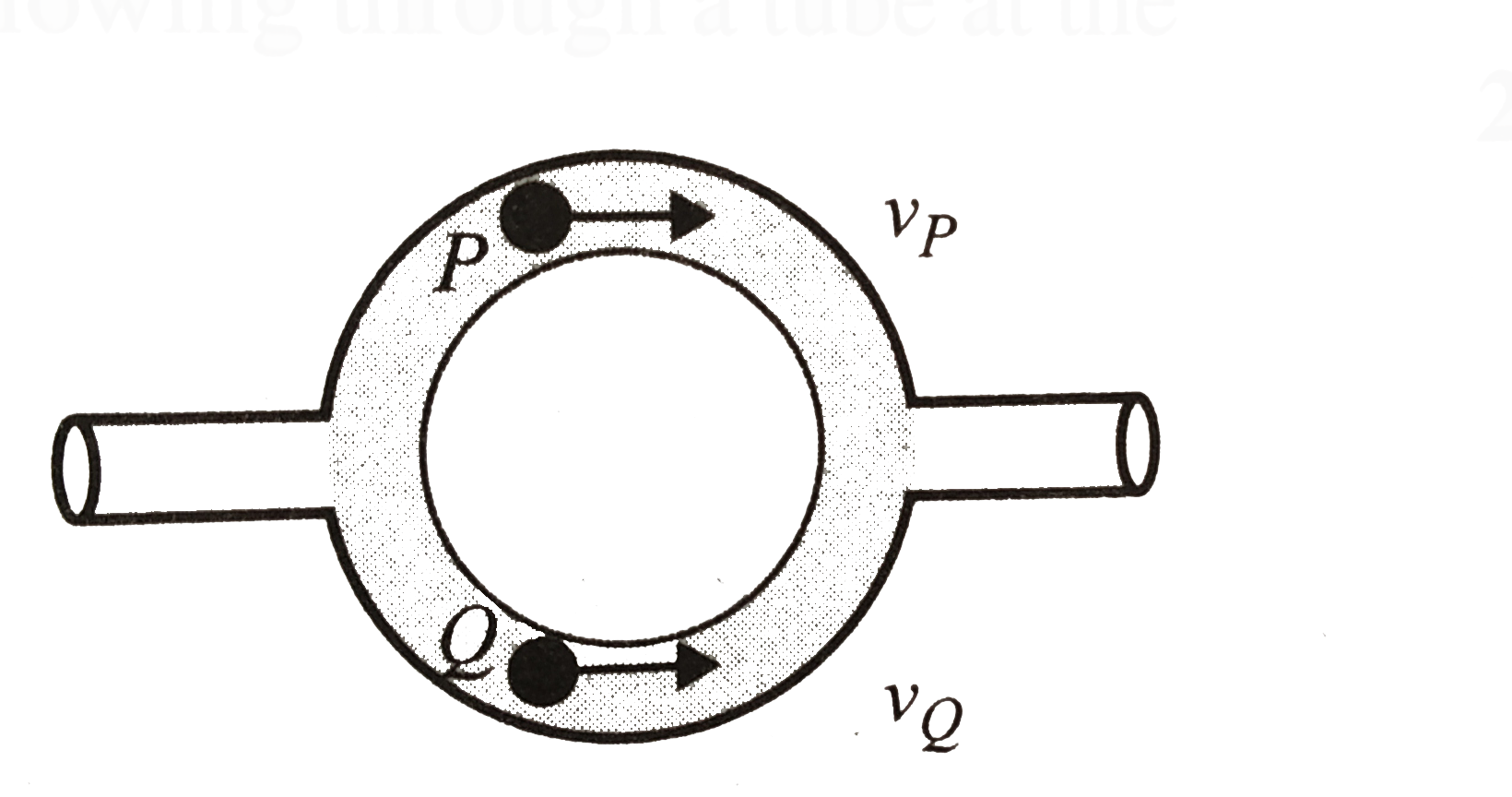
View SolutionThe velocity of an electron at point A1 is V0 where cross sectional area is A. The velocity of electron at the end of contraction at point B, where cross sectional area is 2A, is V1. Find the correct option:
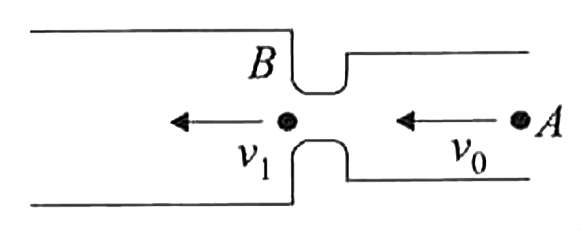
View Solution
